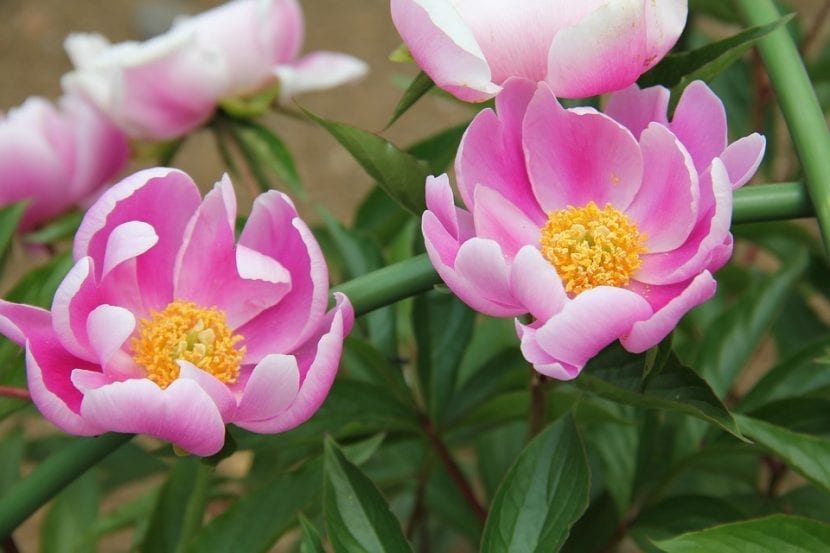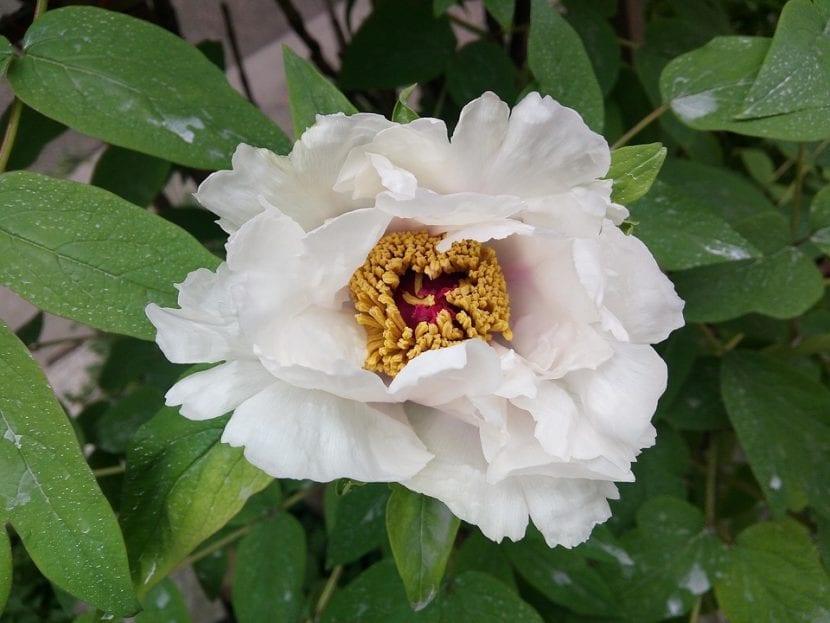
La Paeonia lactiflora It is a magnificent plant that produces flowers that are especially popular since they are large, with very cheerful colors, so giving life to the area where the family will spend very good times will not be difficult with it.
Its maintenance is simple if the weather is good. Being native to the coldest regions of Asia, it is one of those that best resists both cold and frost. Know her.
Origin and characteristics

Our protagonist is a herbaceous native to central and eastern Asia, specifically from eastern Tibet to northern China to eastern Siberia. Its scientific name is Paeonia lactiflora, although it is popularly known as a Chinese peony, hybrid peony, bush rose or rose without thorns. Grows to a height of up to 1m, and has compound leaves 20 to 40cm long.
The flowers are large, 8 to 16cm in diameter, and are composed of 5 to 10 white, pink or crimson petals and yellow stamens.
Several hundred cultivars have been developed, which are grouped into three groups:
- Simple flowers: the petals are lilac, and the stamens are fertile. Similar to wild type, but larger.
- Japanese flowers: the flowers have one or double crown of petals. They are sterile.
- Double flowers: the vast majority, if not all, of stamens are petals.
Uses
Apart from being used as an ornamental in temperate-cold climates, in China it is considered a medicinal plant: the root is used to reduce fever and as an analgesic, to stop bleeding and prevent infections.
What are their cares?

Would you like to have a copy? If so, we recommend that you provide the following care:
- Location: it must be outside, in semi-shade.
- Earth:
- Pot: growing medium for acidic plants.
- Garden: grows in fertile, well-drained, and acidic soils (pH 5 to 6).
- Irrigation: 3-4 times a week in summer, and every 5-6 days the rest of the year.
- Subscriber: in spring and summer with organic fertilizers.
- Multiplication: by seeds, cuttings and grafts.
- Rusticity: ideal for cold climates with frosts down to -18ºC and mild summers (20-25ºC maximum). It cannot live in hot tropical climates.
What did you think of the rose without thorns?